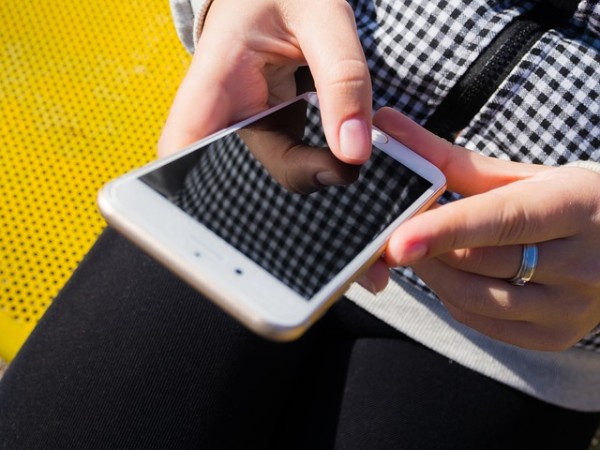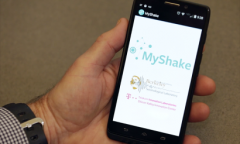By Vishal Goel, | December 12, 2016

The nanogenerator harvests energy from the user's motion and stores enough of it to keep a mobile phone charged for at least one week. (Pixabay)
Researchers at Michigan State University have developed a new device that allows users to power their smartphones by just swiping.
This major breakthrough, a nanogenerator, harvests energy from the motion and stores enough of it to keep a mobile phone charged for at least one week.
Like Us on Facebook
This low-cost device has been successfully operated on a bank of 20 LED lights, an LCD touch screen and a flexible keyboard, all with a simple touching or pressing motion and without the aid of a battery, the Daily Mail reported.
According to Nelson Sepulveda, associate professor of electrical and computer engineering and lead investigator of the project at MSU, the future application of the device will mostly be to power wearable devices.
How does the technology really work?
First, a silicone wafer is fabricated with several thin layers of environmentally friendly substances like silver, polyimide and polypropylene ferroelectret.
Afterwards, ions are added so that each layer in the device contains charged particles. When the device is compressed by human motion, the mechanical energy converts into electrical energy. The final complete product, called a biocompatible FerroElectret NanoGenerator (or FENG), is as thin as a sheet of paper.
The study, funded by the National Science Foundation, suggests that the various advantages of the device make FENG a very promising method for harvesting mechanical energy for many autonomous electronics such as wireless headsets, cell phones, and other touchscreen devices. The characteristics of FENG include being lightweight, flexible, biocompatible, scalable, low-cost, and robust.
Additionally, the device also becomes more powerful when folded because each time it is folded, the amount of voltage being created increases exponentially. When such a large device is folded again and again, it can store more energy. For instance, if it is put in the heel of a shoe, it would create power each time the heel strikes the ground.
-
Use of Coronavirus Pandemic Drones Raises Privacy Concerns: Drones Spread Fear, Local Officials Say

-
Coronavirus Hampers The Delivery Of Lockheed Martin F-35 Stealth Fighters For 2020

-
Instagram Speeds Up Plans to Add Account Memorialization Feature Due to COVID-19 Deaths

-
NASA: Perseverance Plans to Bring 'Mars Rock' to Earth in 2031

-
600 Dead And 3,000 In The Hospital as Iranians Believed Drinking High-Concentrations of Alcohol Can Cure The Coronavirus

-
600 Dead And 3,000 In The Hospital as Iranians Believed Drinking High-Concentrations of Alcohol Can Cure The Coronavirus

-
COVID-19: Doctors, Nurses Use Virtual Reality to Learn New Skills in Treating Coronavirus Patients











